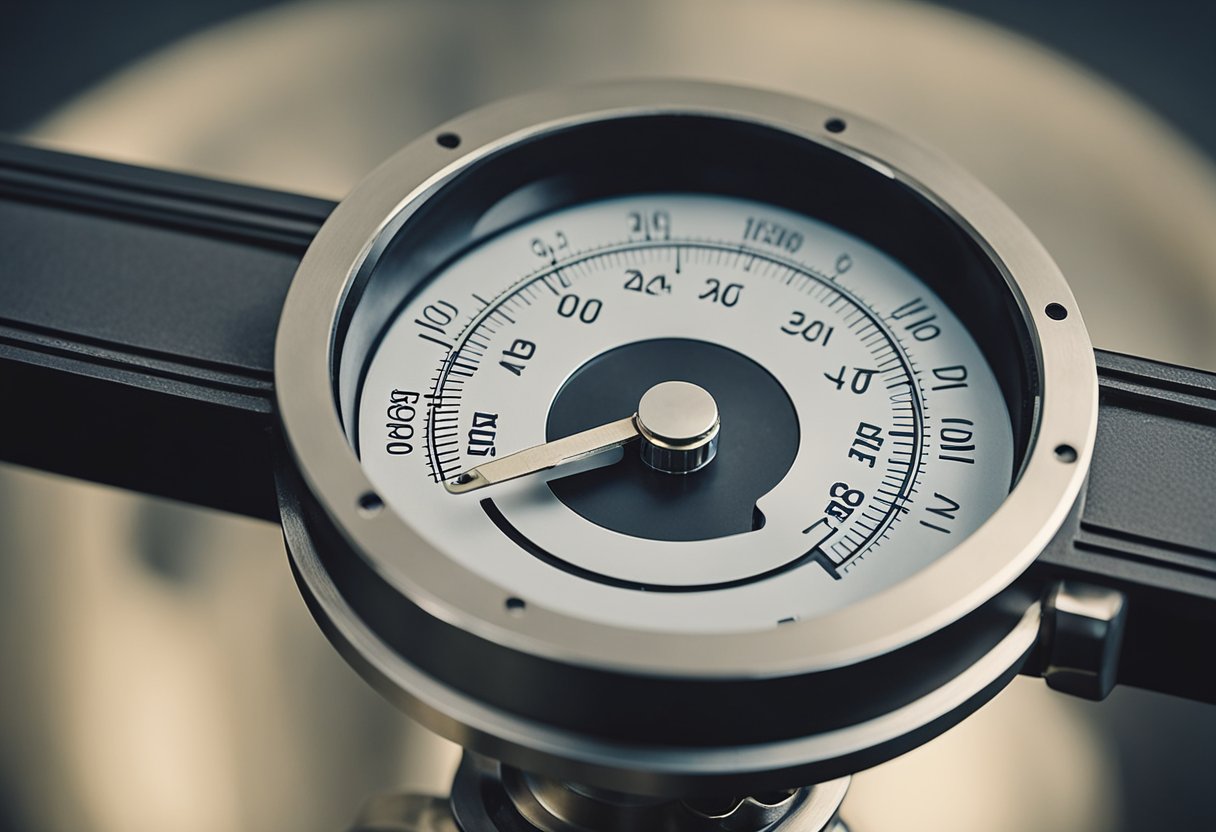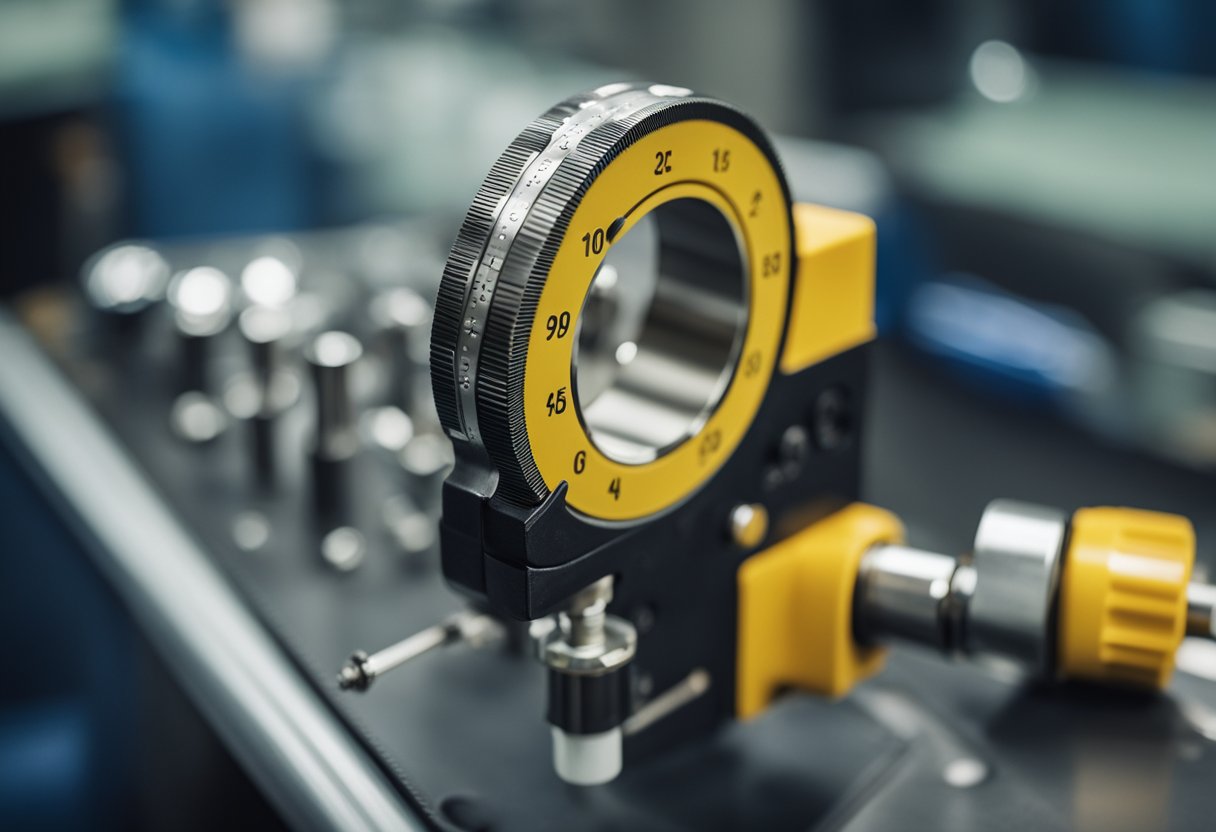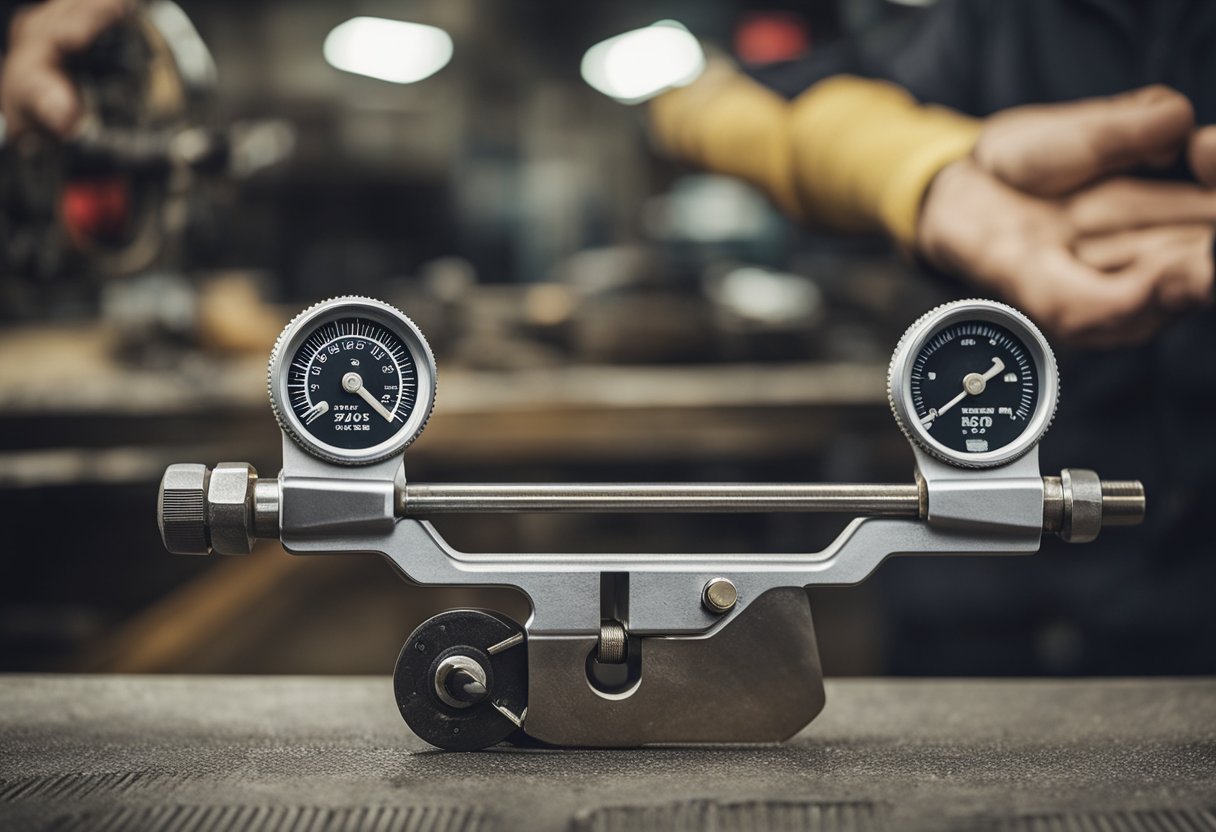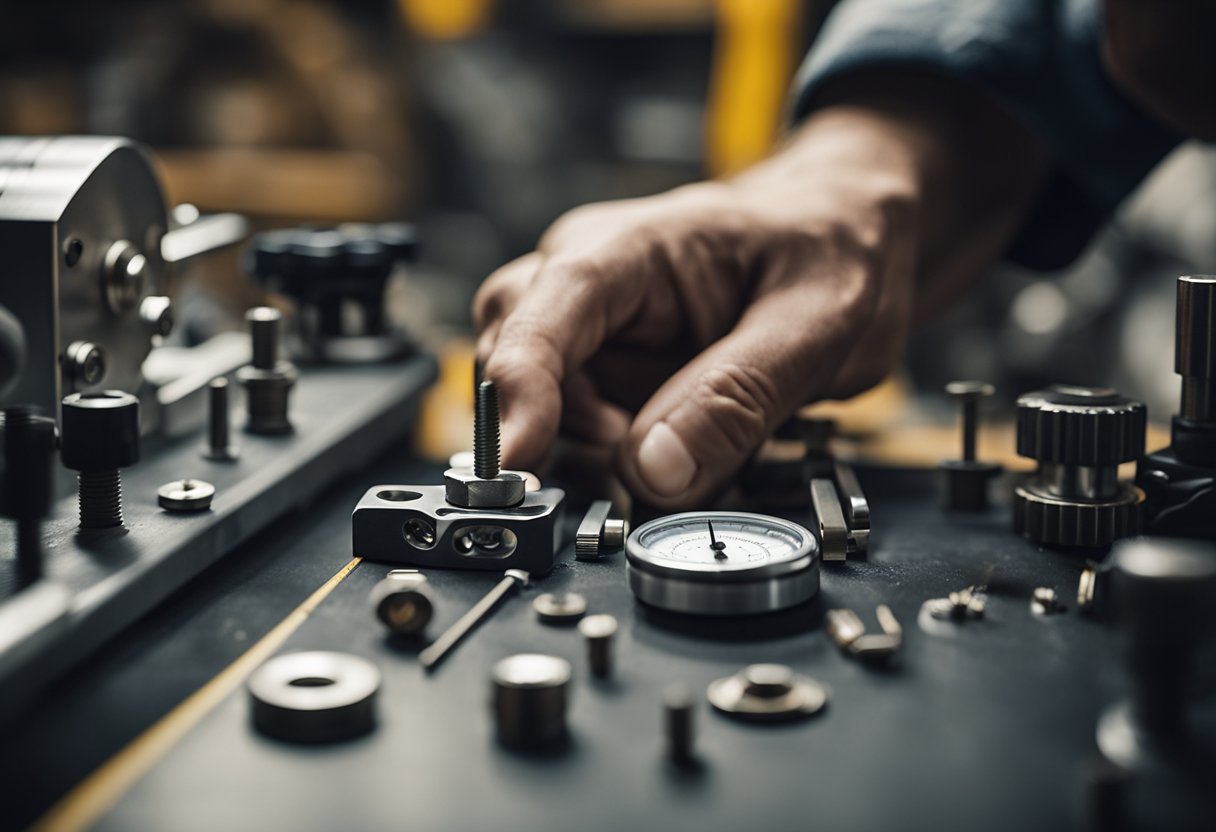Torque angle gauges are essential tools for anyone who needs to tighten bolts with precision. These gauges measure both the torque and angle of a bolt while tightening, making it easier to apply the correct tension to the job at hand. In this article, I will provide a step-by-step guide on how to use a torque angle gauge properly, as well as tips for maintenance and calibration to ensure accuracy.
Understanding torque angle gauges is crucial for anyone who needs to tighten bolts accurately. These gauges are used in applications that require precise and accurate torque values and parts that need to be torqued using the torque-angle method. The automotive industry, for instance, commonly uses torque-angle gauges for tightening cylinder heads, connecting rods, crankshafts, and other components that require accurate tightening.
Key Takeaways
- Torque angle gauges are essential tools for anyone who needs to tighten bolts with precision.
- Understanding torque angle gauges is crucial for anyone who needs to tighten bolts accurately.
- Proper maintenance and calibration of torque angle gauges are necessary to ensure accuracy.
Understanding Torque Angle Gauges
As a mechanic, I have found that torque angle gauges are essential tools for ensuring that fasteners are tightened to the correct specifications. A torque angle gauge measures the angle of rotation that is applied to a fastener as it is tightened, allowing for accurate tension to be applied to the job at hand.
There are different types of torque angle gauges available on the market. Some digital torque wrenches measure both torque and angle, while others only measure the angle. The most common type of torque angle gauge measures only the angle, and it is used after the fastener has been torqued using a torque wrench.
One of the advantages of using a torque angle gauge is that it ensures that the fastener is tightened to the correct specification. This is important because over-tightening or under-tightening can lead to problems such as stripped threads, damaged parts, and even safety hazards.
Using a torque angle gauge is relatively easy. First, set the desired torque value on the gauge. Then, attach the gauge to a torque wrench or a breaker bar, and tighten the fastener until the gauge reaches the desired angle. If both values reach your desired specifications, then you can be confident that your bolt has been tightened correctly.
In summary, torque angle gauges are essential tools for any mechanic or DIY enthusiast who wants to ensure that fasteners are tightened to the correct specifications. By measuring the angle of rotation that is applied to a fastener, torque angle gauges allow for accurate tension to be applied to the job at hand, reducing the risk of problems such as stripped threads or damaged parts.
The Importance of Torque and Angle in Fastening
https://www.youtube.com/watch?v=xQZ47BdjHkM&embed=true
As a mechanical engineer, I know that fastening is a critical process in any mechanical assembly. It is essential to ensure that the fasteners are tightened to the correct torque specification to achieve the desired clamp load. However, just tightening the fasteners to a specific torque may not be enough. The torque specification does not take into account the friction between the fastener and the mating surface, which can affect the clamp load. This is where torque and angle tightening comes into play.
Torque and angle tightening methods can reduce the uncertainty in the tightening process by reducing the reliance on torque control alone. For every 360-degree rotation of the bolt, the nut advances down the thread by a fixed number of millimeters on a given bolt. This is referred to as the thread pitch. By measuring the angle of rotation applied to a fastener as it is tightened, we can determine the amount of stretch in the bolt and the resulting clamp load. This is known as torque and angle tightening.
Using a torque angle gauge is a simple and effective way to achieve accurate tension in fasteners. To use a torque angle gauge, you need to attach it to a torque wrench or a breaker bar and then tighten the fastener until the gauge reaches the desired angle. This allows for accurate tension to be applied to the job at hand.
It is essential to note that torque and angle tightening methods are not a replacement for the specified torque. The specified torque should always be used as a starting point, and then the angle of rotation should be measured to achieve the desired clamp load. Over-torqueing can lead to fastener failure, while under-torqueing can result in inadequate clamp load, leading to joint failure.
In conclusion, torque and angle tightening methods are essential in ensuring that fasteners are tightened to the correct specification and achieve the desired clamp load. By measuring the angle of rotation applied to a fastener as it is tightened, we can determine the amount of stretch in the bolt and the resulting clamp load. Using a torque angle gauge is a simple and effective way to achieve accurate tension in fasteners.
Using a Torque Angle Gauge: Step-by-Step Guide
https://www.youtube.com/watch?v=s1i-3Z_MZZs&embed=true
Using a torque angle gauge is a precise method of tightening fasteners to a specific rotation angle. Here is a step-by-step guide on how to use a torque angle gauge:
-
First, attach the torque angle gauge to the handle of your torque wrench or breaker bar. Ensure that it is securely tightened and aligned with the reference point on the fastener.
-
Set the desired rotation angle on the torque angle gauge by turning the dial or marker. The indicator should be aligned with the desired angle.
-
Apply the torque to the fastener until you hear a “click” or reach the desired torque reading on your torque wrench.
-
Once the “click” is heard or the desired torque is reached, continue to apply force to the fastener until the torque angle gauge reads the desired rotation angle.
-
Read the rotation angle on the torque angle gauge. The gauge may have clicks that indicate the rotation angle in increments.
-
Repeat the process until all fasteners are tightened to the desired rotation angle.
Using a torque angle gauge is a precise method of tightening fasteners to a specific rotation angle. By following these steps, you can ensure that your fasteners are tightened to the correct specification, preventing over-tightening or under-tightening.
Maintenance and Calibration for Accuracy
https://www.youtube.com/watch?v=VrOvF9b5Qis&embed=true
As with any precision tool, it is crucial to maintain and calibrate your torque angle gauge to ensure accurate readings. Proper maintenance and calibration will also help prolong the life of your tool.
To maintain your torque angle gauge, keep it clean and dry. Avoid exposing it to extreme temperatures or harsh chemicals. Store it in a protective case or pouch when not in use.
Calibration is the process of adjusting your torque angle gauge to ensure it is measuring accurately. Most torque angle gauges require professional calibration, which can be done by a calibration service or using a calibration device. Some digital torque wrenches or electronic torque wrenches may have a built-in calibration function that you can use.
It is important to calibrate your torque angle gauge regularly, especially if you use it frequently or if it has been dropped or damaged. A calibrated torque angle gauge will provide accurate readings and prevent over-tightening or under-tightening of bolts and fasteners.
In summary, to ensure precise and accurate readings from your torque angle gauge, it is crucial to maintain and calibrate it regularly. Keep it clean and dry, avoid exposing it to extreme temperatures or harsh chemicals, and store it in a protective case or pouch when not in use. Professional calibration or using a calibration device is necessary to ensure accurate readings, and it should be done regularly.
Common Issues and Troubleshooting
When using a torque angle gauge, there are a few common issues that you may encounter. Here are some potential issues and how to troubleshoot them:
Over-tightening
One of the most common issues when using a torque angle gauge is over-tightening the fastener. This can happen when you apply too much force with the wrench, causing the fastener to exceed its recommended torque specification.
To avoid over-tightening, make sure you’re using the correct torque specification for the fastener and that you’re following the correct torque sequence. Additionally, be mindful of the thread pitch of the fastener and ensure that you’re not cross-threading it.
Thread pitch
Thread pitch can also cause issues when using a torque angle gauge. If the thread pitch is too fine, it can be difficult to accurately measure the angle of rotation. On the other hand, if the thread pitch is too coarse, it can be difficult to accurately measure the torque.
To avoid issues with thread pitch, make sure you’re using the correct torque specifications for the fastener and that you’re using the correct thread pitch gauge to measure the pitch.
Lubrication
Lubrication can also affect the accuracy of your torque readings. If the fastener is not properly lubricated, it can cause the torque to be higher than the recommended specification. On the other hand, if the fastener is over-lubricated, it can cause the torque to be lower than the recommended specification.
To ensure accurate torque readings, make sure you’re using the correct lubricant for the fastener and that you’re applying it correctly. Refer to the manufacturer’s instructions for the correct lubrication procedure.
In conclusion, when using a torque angle gauge, it’s important to be mindful of potential issues and troubleshoot them accordingly. By following the correct torque specifications, torque sequence, and lubrication procedures, you can ensure accurate torque readings and prevent over-tightening or under-tightening of the fastener.
Industry Applications of Torque Angle Gauges
As a versatile tool, torque angle gauges are used in various industries where precise torque and angle measurements are required. The following are some of the industries where torque angle gauges are commonly used:
Automotive Industry
In the automotive industry, torque angle gauges are used to ensure that bolts and nuts are tightened to the manufacturer’s specifications. This is important because over-tightening or under-tightening bolts can lead to serious safety issues. Torque angle gauges are used to tighten bolts on engines, transmissions, suspension systems, and other critical components.
Manufacturing Industry
In the manufacturing industry, torque angle gauges are used to ensure that fasteners are tightened to the correct torque and angle specifications. This is important because over-tightening or under-tightening fasteners can lead to product failures and safety issues. Torque angle gauges are used in the production of various products, such as appliances, electronics, and machinery.
Aerospace Industry
In the aerospace industry, torque angle gauges are used to ensure that bolts and other fasteners are tightened to the correct torque and angle specifications. This is critical because loose bolts or over-tightened bolts can lead to catastrophic failures. Torque angle gauges are used in the assembly of aircraft engines, wings, landing gear, and other critical components.
Heavy Machinery Industry
In the heavy machinery industry, torque angle gauges are used to ensure that bolts and other fasteners are tightened to the correct torque and angle specifications. This is important because loose bolts or over-tightened bolts can lead to equipment failures and safety issues. Torque angle gauges are used in the assembly and maintenance of various heavy machinery, such as cranes, excavators, and bulldozers.
Mining Industry
In the mining industry, torque angle gauges are used to ensure that bolts and other fasteners are tightened to the correct torque and angle specifications. This is important because loose bolts or over-tightened bolts can lead to equipment failures and safety issues. Torque angle gauges are used in the assembly and maintenance of various mining equipment, such as drills, loaders, and conveyors.
Construction Industry
In the construction industry, torque angle gauges are used to ensure that bolts and other fasteners are tightened to the correct torque and angle specifications. This is important because loose bolts or over-tightened bolts can lead to equipment failures and safety issues. Torque angle gauges are used in the assembly and maintenance of various construction equipment, such as cranes, excavators, and bulldozers.
In conclusion, torque angle gauges are a critical tool in various industries where precise torque and angle measurements are required. By using torque angle gauges, companies can ensure that their products and equipment are safe and reliable.
Choosing the Right Torque Angle Gauge
When it comes to choosing the right torque angle gauge, there are a few factors to consider. First, it is important to determine the specific needs and common applications for which the torque angle gauge will be used. This will help determine the type of gauge that will be most suitable for the job.
One of the first things to consider is the type of torque wrench being used. Some digital torque wrenches come equipped with a built-in digital torque angle gauge, while others may require a separate gauge to be attached. It is important to choose a torque angle gauge that is compatible with the torque wrench being used.
Another important factor is reliability. It is important to choose a torque angle gauge that is accurate and consistent in its readings. This will help ensure that the correct amount of tension is being applied to the job at hand.
When choosing a torque angle gauge, it is also important to consider the equipment that will be used with it. A torque angle gauge may be used with a variety of tools, including a breaker bar, ratchet, or other similar tools. It is important to choose a gauge that is compatible with the equipment being used.
Finally, it is important to consider the performance of the torque angle gauge. Some digital torque angle gauges may offer additional features, such as a protractor or other measuring tools. These features can help improve the accuracy and reliability of the gauge.
Overall, choosing the right torque angle gauge is an important step in ensuring that the correct amount of tension is applied to the job at hand. By considering factors such as compatibility, reliability, equipment, and performance, it is possible to choose a gauge that will meet your specific needs and provide accurate, consistent readings.
Conclusion
https://www.youtube.com/watch?v=ZeRoyfVMvJI&embed=true
In conclusion, using a torque angle gauge is an essential part of ensuring optimal performance and safety when tightening fasteners. By combining torque and angle measurements, you can achieve accurate and consistent tightening, which is crucial for maintaining the integrity of the fastener and the overall working condition of the equipment.
Throughout this article, I have shared my knowledge on how to use a torque angle gauge, including the steps for calibration, selection of proper tools and sockets, and the actual usage of the gauge. By following these steps, you can ensure that you are using the torque angle gauge correctly and achieving accurate results.
It is important to keep in mind that using a torque angle gauge requires some level of skill and practice. However, with proper training and experience, you can become proficient in using this tool and achieve consistent and reliable results.
In terms of convenience, using a torque angle gauge can save you time and effort by providing a more efficient and accurate way of tightening fasteners. Additionally, it can help prevent over-tightening or under-tightening, which can lead to equipment failure or safety hazards.
Overall, incorporating the use of a torque angle gauge into your work practices can lead to improved performance, safety, and working conditions. By following the steps outlined in this article and practicing safe and proper usage, you can achieve optimal results and ensure the longevity of your equipment.
Frequently Asked Questions
https://www.youtube.com/watch?v=8WohM6pt58I&embed=true
What is the purpose of using a torque angle gauge?
A torque angle gauge is used to measure the rotation angle of a fastener after it has been tightened to a specific torque value. This is important in automotive applications where the torque and angle of a fastener are critical to ensure proper assembly and prevent failure. The torque angle method is used to achieve a more accurate and consistent tightening of the fastener.
How do you use a digital torque angle gauge?
To use a digital torque angle gauge, first, ensure that the gauge is calibrated properly. Then, select the proper tool and socket for the fastener. Attach the gauge to the socket and tighten the fastener to the specified torque value. Once the torque value is reached, continue to tighten the fastener while monitoring the angle reading on the gauge until the desired angle is achieved.
What is a torque-angle chart and how is it used?
A torque-angle chart is a reference chart that provides the torque and angle specifications for a particular fastener. To use a torque-angle chart, first, locate the chart for the specific application. Then, identify the fastener and torque specification. Use a torque wrench to tighten the fastener to the specified torque value. Finally, use a torque angle gauge to turn the fastener to the specified angle while monitoring the angle reading on the gauge.
What are the benefits of using a Snap-on torque angle gauge?
Snap-on torque angle gauges are known for their accuracy and durability. They are designed to withstand the harsh conditions of an automotive environment and provide consistent and reliable results. Additionally, Snap-on offers a variety of torque angle gauges to fit different applications and budgets.
How can you make a DIY torque angle gauge?
While it is possible to make a DIY torque angle gauge, it is not recommended due to the precision required for accurate results. However, if you are interested in making a DIY torque angle gauge, there are several tutorials available online that provide step-by-step instructions.
Can you measure torque angle without a gauge?
While it is possible to measure torque angle without a gauge, it is not recommended as it is difficult to achieve accurate and consistent results. The torque angle method is used to achieve a more accurate and consistent tightening of the fastener, and a torque angle gauge is the most reliable tool for this purpose.

Hi, I’m Sal Muller of Tooltrip.com. My DIY experience led me to understand essential power tools for home projects. Tooltrip.com guides enthusiasts and professionals in choosing right tools for any job. I provide concise top tool reviews for easier, efficient DIY.






